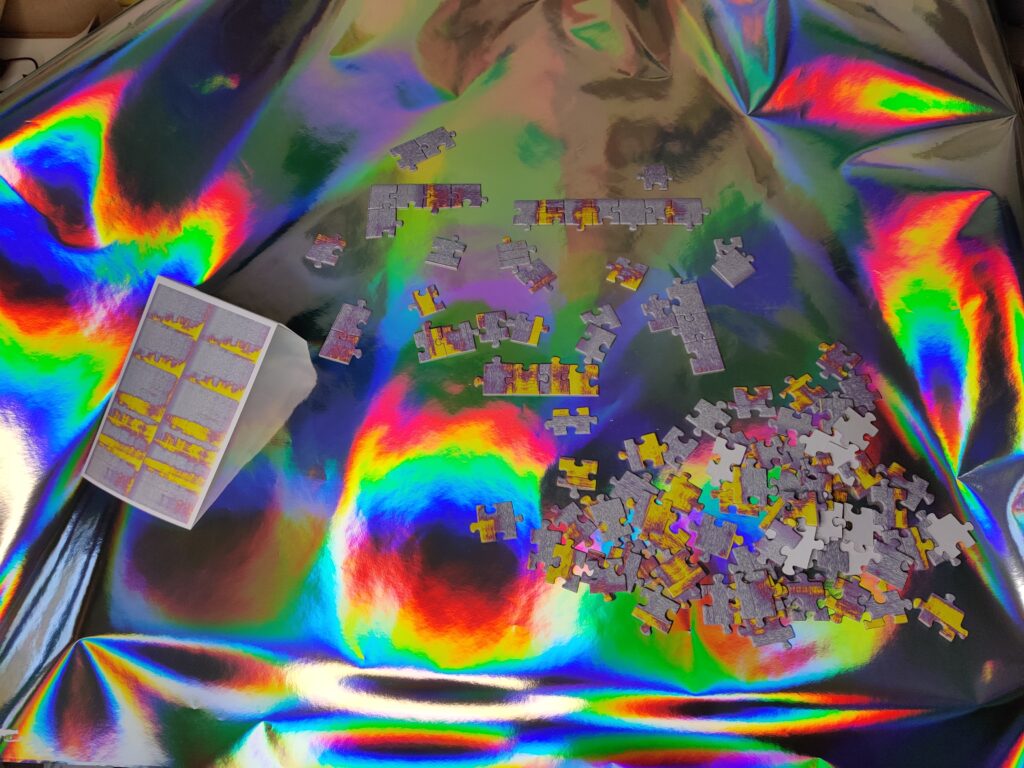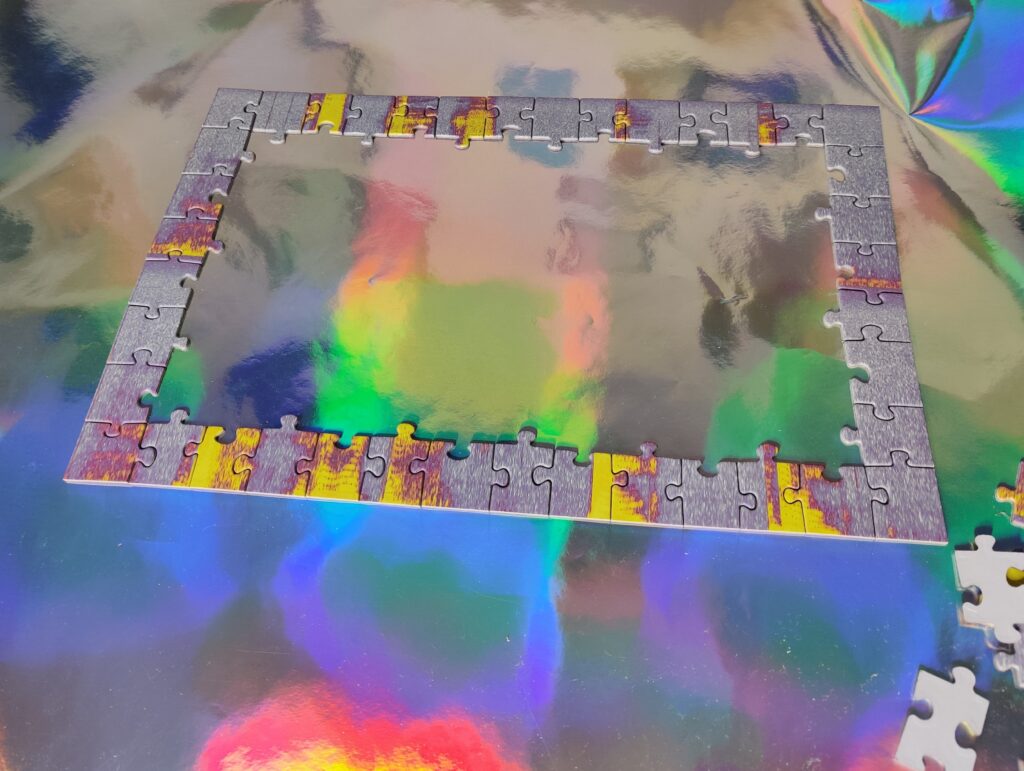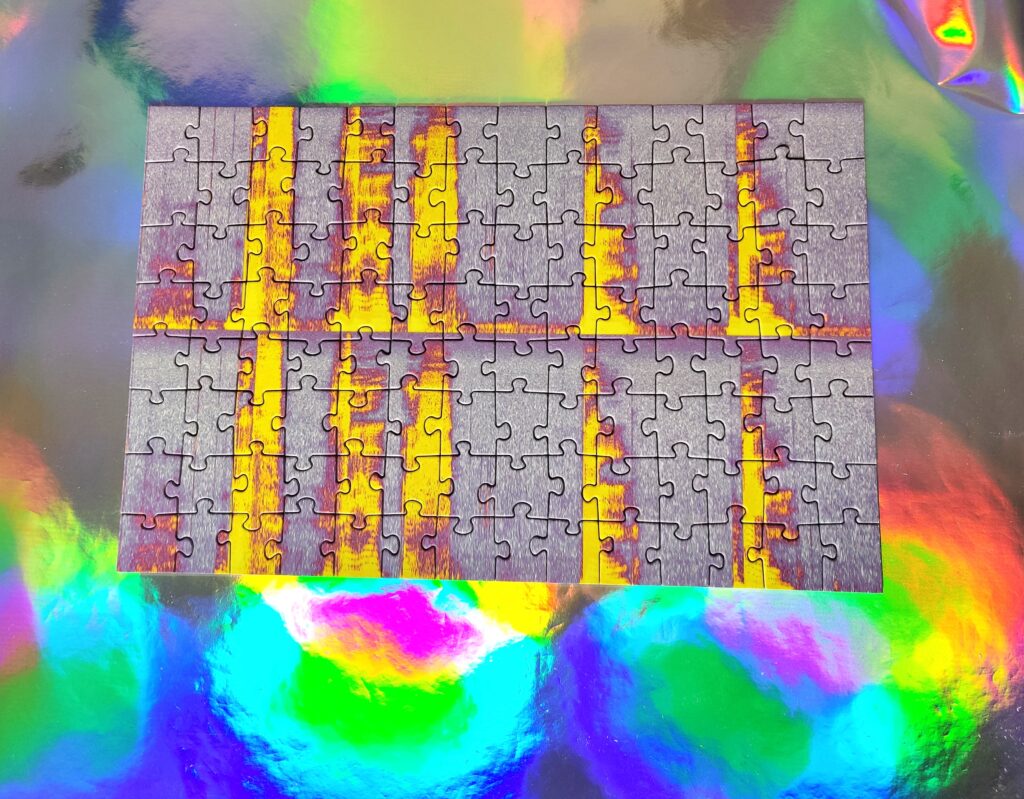was sehe ich wenn wen, 2025
what do i see when (i see) whom, 2025
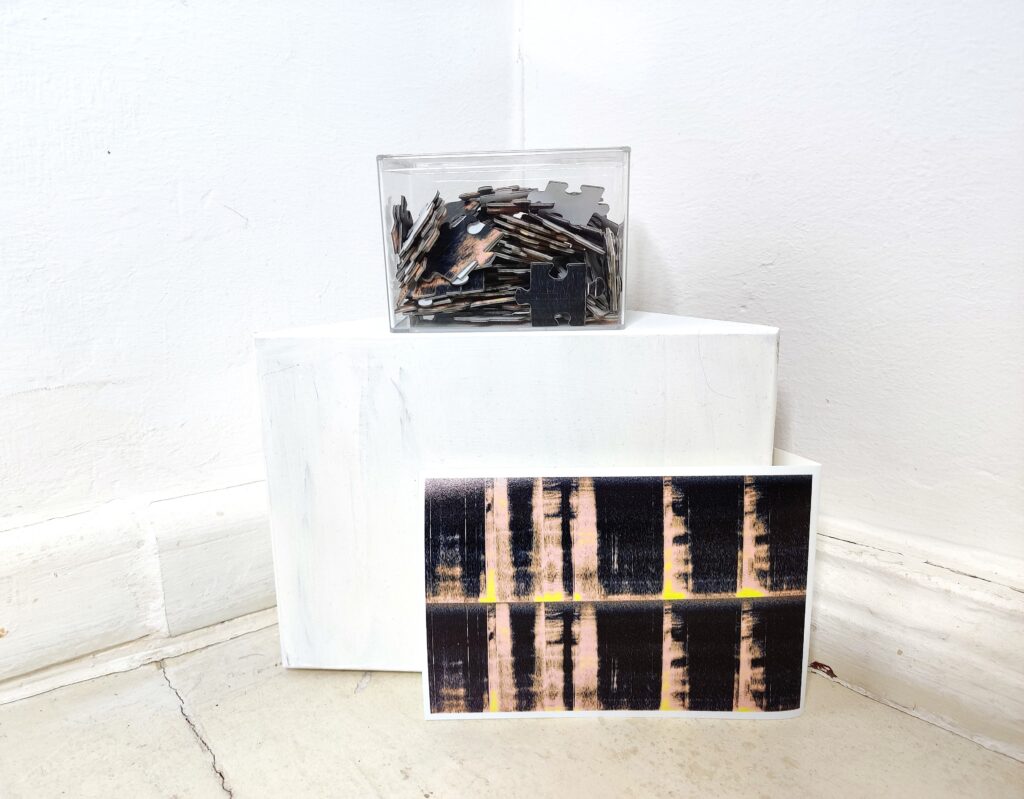

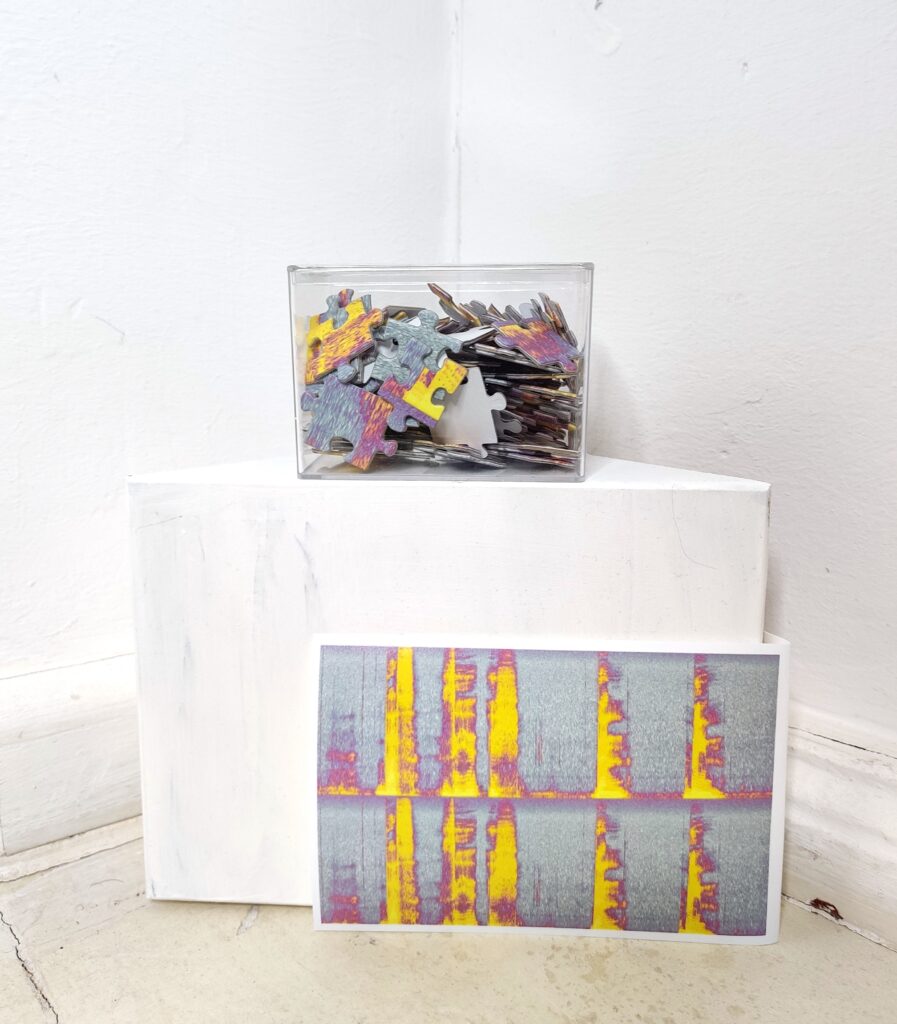
PUZZLE – Audiospektren
Seit ich im Gropius Bau die Erfahrung gemacht habe, ein Puzzleteil der pieces of sky von Yoko Ono aus einem Stahlhelm zu nehmen, bin ich fasziniert vom Medium Puzzle. Es war sehr bewegend dieses piece of sky aus einem der originalen Stahlhelme, die im Raum von der Decke hängend installiert waren. Was Marina Abramović über Performance-Art sagt, gilt auch für interaktive Kunst: du musst es erleben, oder du verpasst es. Wie es sich anfühlt, ein Stück Himmel aus einem Stahlhelm zu nehmen, lässt sich nicht beschreiben. Die Erfahrung schreibt sich auf vielen Ebenen in den Körper ein.
Ich weiß nicht, ob viele Künstler:innen speziell von Yoko Onos Puzzle-Arbeiten inspiriert waren, jedenfalls begegnet man dem Puzzle als Medium plötzlich öfters in Ausstellungen. Nach dem Sticken, Stricken, Nähen evt. ein neues Experimentierfeld, das sich da öffnet.
Bei der Arbeit an meiner aktuellen Werkreihe zu „textquanten“, stieß ich auf einen Satz, den ich sofort als Audiospektrum vor mir sah. Erst schwebte mir eine großflächige Umsetzung vor (die sicherlich auch nice ist), dann war plötzlich klar: hier spricht das Medium Puzzle am besten. In unterschiedlichen Farbverläufen habe ich das Audiospektrum „was sehe ich wenn wen“ als Puzzle produzieren lassen. Obwohl die Puzzle kleinformatig sind (112 Teile), stellen sie eine Herausforderung dar. Das Puzzeln von abstrakten bzw. ungewohnten Bildmotiven ist schwieriger als gedacht. Es fordert Konzentration und Geduld. Eigenschaften, die bei der täglichen Mediennutzung von Smart Phones zunehmend verlorengehen. Das Puzzle ist überhaupt der Gegenpol zum Smart Phone.
Puzzeln wirkt sich positiv auf das Gedächtnis, auf Wahrnehmung und Flexibilität aus. Es fordert Fokussierung auf den Moment. Es ist zeitintensiv. Es bündelt die Aufmerksamkeit. Passende Teile zu finden und den fortschreitenden Prozess der Vervollständigung vor Augen zu haben, bereitet Glücksgefühle, sorgt für die Ausschüttung von Dopamin. Ein Puzzleteil zu finden ist ein Erfolgserlebnis, ein Puzzle fertig zu stellen sowieso. Puzzeln ist die unmittelbare Erfahrung etwas Komplexes mit den Händen zu schaffen. Es schult den Blick, die Feinmotorik, beide Gehirnhälften sind aktiv und Stress wird abgebaut.
was sehe ich wenn wen ist ein Puzzle im Format 20×30 für eine bis zwei Personen. Dauer: 1-1,5h (man glaubt es kaum, aber es dauert tatsächlich).
Mehr Arbeiten mit Audiospektren
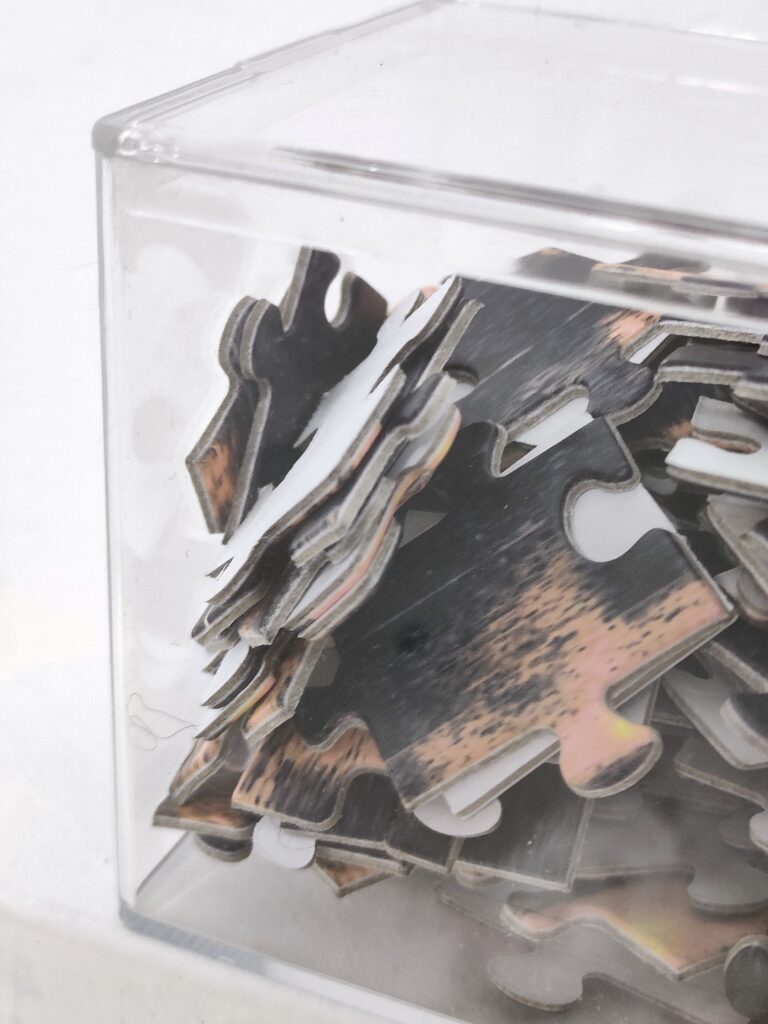
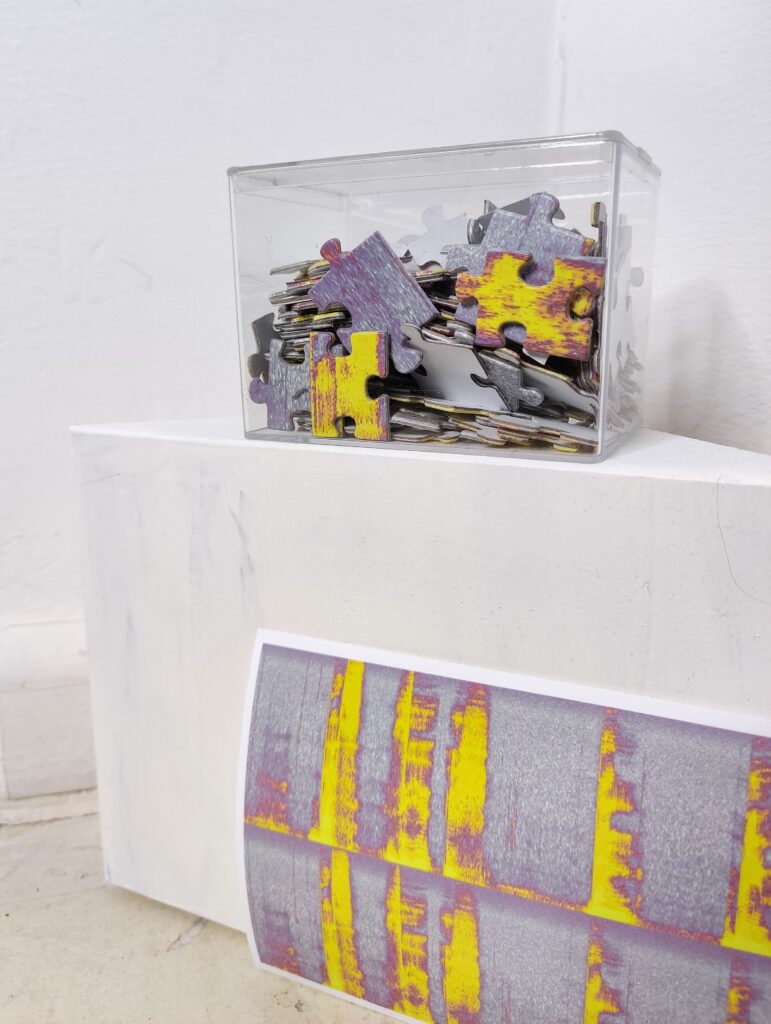
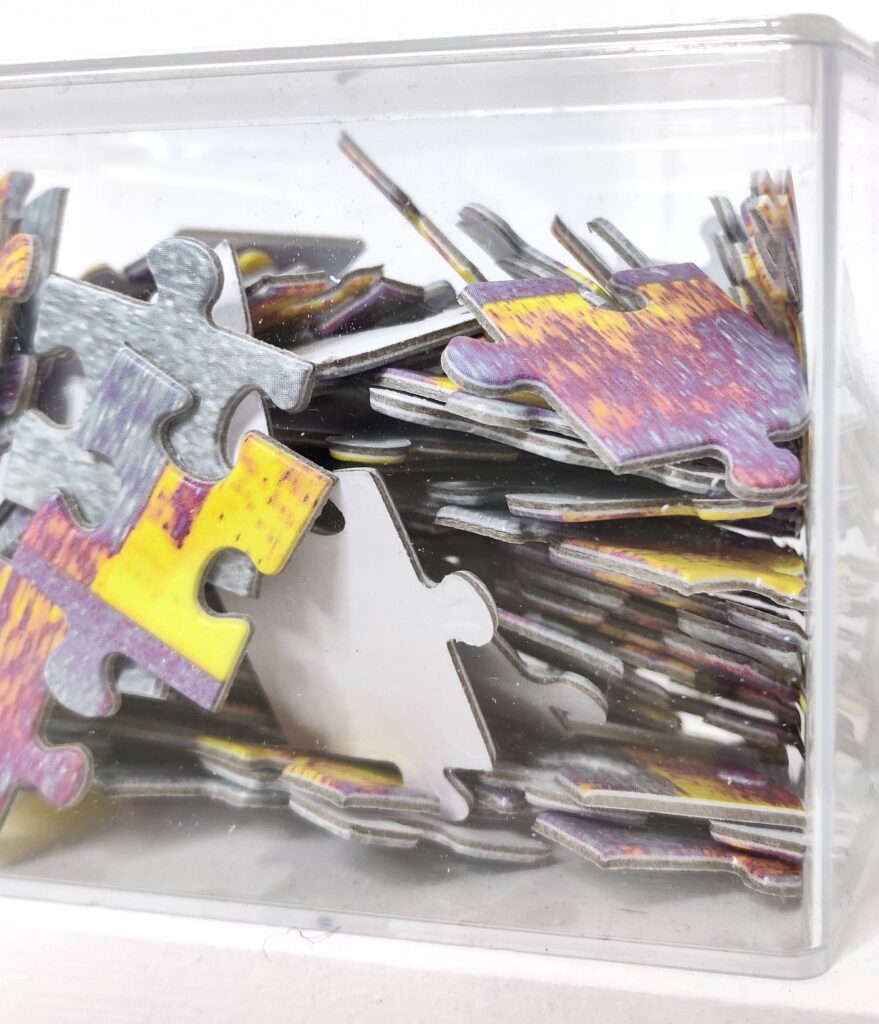
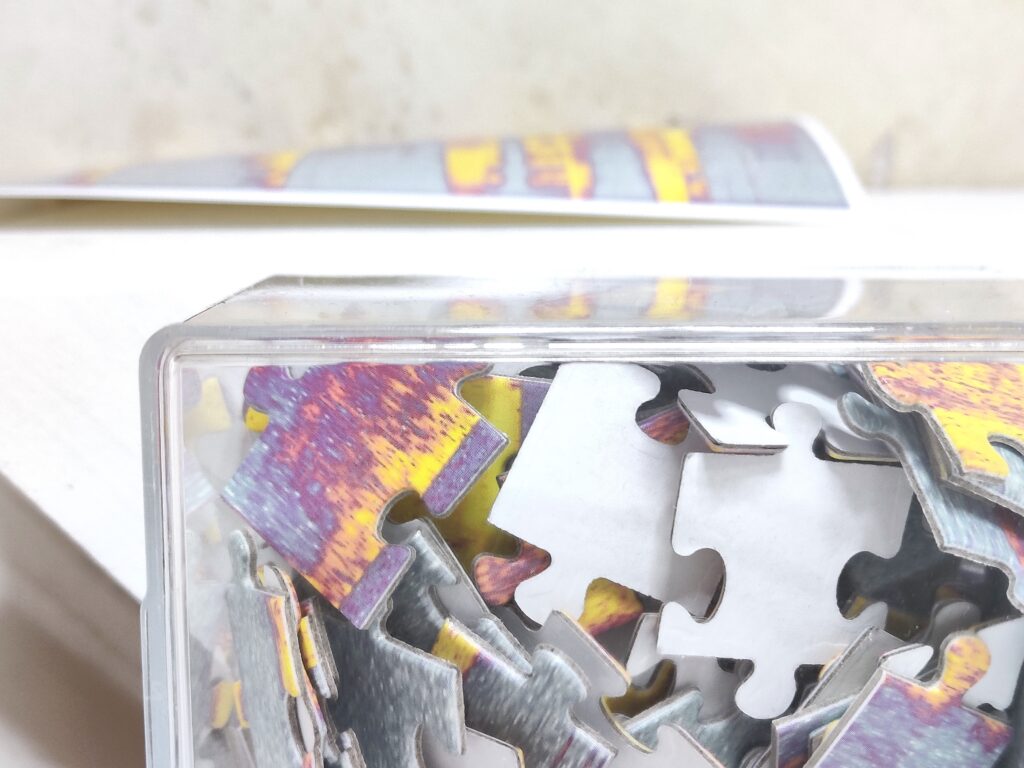
ENGLISH VERSION
since I had the experience of taking a piece of Yoko Ono’s pieces of sky from a steel helmet at the Gropius Bau, I have been fascinated by the medium of puzzles. It was very touching to take this piece of sky from one of the original steel helmets that were installed hanging from the ceiling in the room. Writing this down i have tot hink of Marina Abramovic and what he says about performance art, what also applies to interactive art: you have to experience it, or you’ll miss it. It’s impossible to describe how it feels to take a ‚piece of sky‚ from a steel helmet. The experience is engraved in your body on many levels.
I don’t know if many artists were particularly inspired by Yoko Ono’s puzzle works, but in any case, puzzles as a medium are suddenly appearing more often in art exhibitions. After embroidery, knitting and sewing, this may be a new field of experimentation that is opening up (my guess).
While working on my current series of works on ‘text quanta,’ (or: quantum text) I came across a sentence that I immediately saw as an audio spectrum in front of me. At first, I thought of a large-scale implementation (which would still certainly be nice), but then it suddenly became clear: the medium of puzzles is the best fit here. So I had the audio spectrum ‘what do I see when (i see) whom’ produced as a jigsaw puzzle in different colour gradients. Although the jigsaw puzzles are small in size (112 pieces), they are a challenge to the puzzling person. Puzzling abstract or unfamiliar images is more difficult than expected. It requires concentration and patience. Qualities that are increasingly being lost in the daily use of smartphones. The puzzle is the antithesis of the smartphone.
Puzzles have a positive effect on memory, perception, flexibility. It requires you to focus on the moment. It is (in a positive way) time-consuming. It concentrates your attention. Finding the right pieces and seeing the process of puzzling makes you happy for it causes the release of dopamine. Finding a piece of the puzzle is a sense of achievement, as is completing the puzzle. Puzzling is the immediate experience of creating something complex with your hands. It trains the attention and fine motor skills, both sides of the brain are active and stress is reduced.
what do I see when (i see) whom is a 20×30 puzzle recommended for one to two people. Duration: 1-1.5 hours (yes, it’s hard to believe, but creating it really does take time. But keep in mind: it makes you happy).
